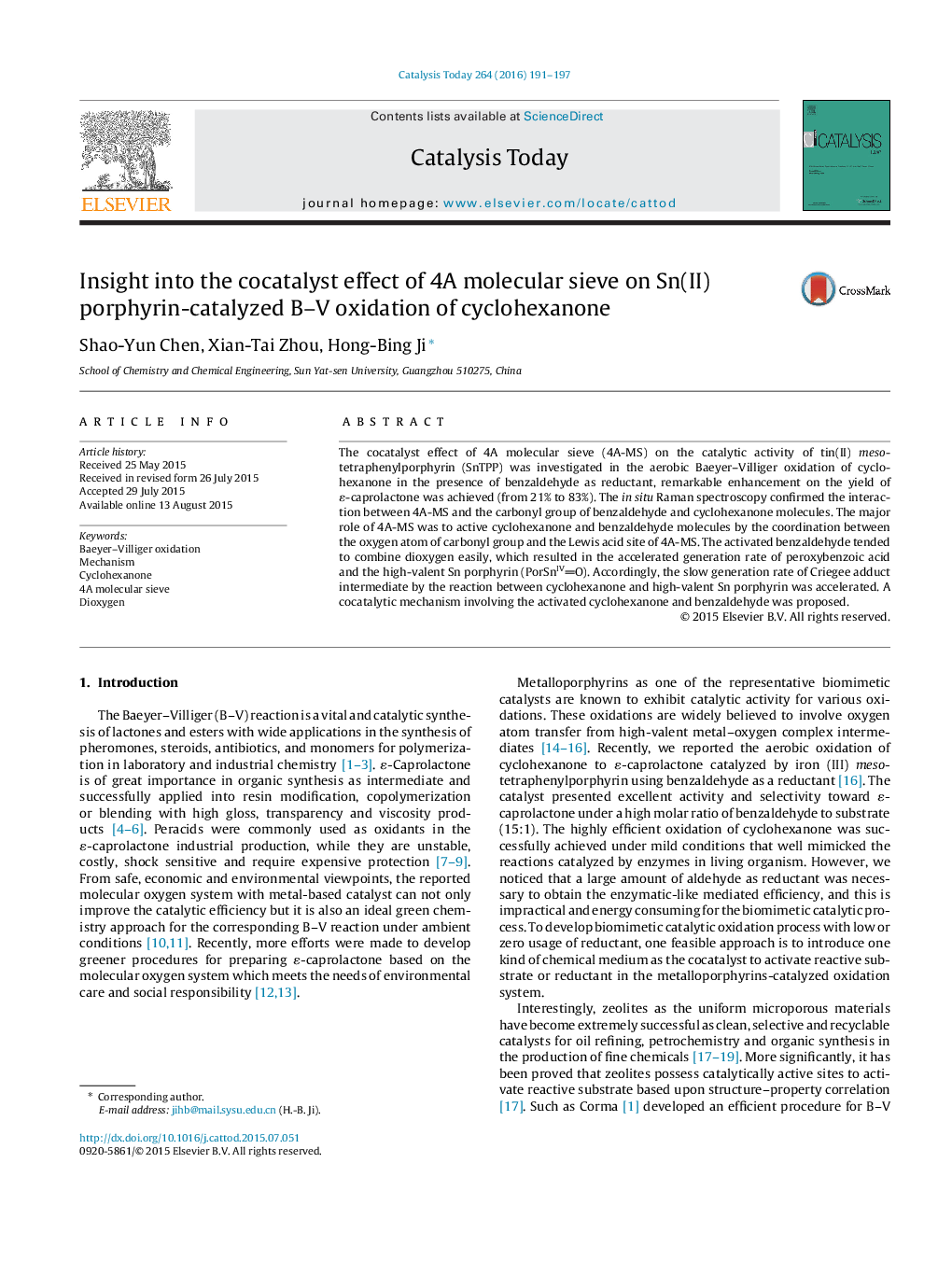| Article ID | Journal | Published Year | Pages | File Type |
|---|---|---|---|---|
| 53315 | Catalysis Today | 2016 | 7 Pages |
•Remarkable cocatalytic effect was obtained in the SnTPP-catalyzed B–V oxidation.•The role of 4A-MS was to activate benzaldehyde and cyclohexanone molecules.•The cocatalytic mechanism was tested by in situ characterization methods.
The cocatalyst effect of 4A molecular sieve (4A-MS) on the catalytic activity of tin(II) meso-tetraphenylporphyrin (SnTPP) was investigated in the aerobic Baeyer–Villiger oxidation of cyclohexanone in the presence of benzaldehyde as reductant, remarkable enhancement on the yield of ɛ-caprolactone was achieved (from 21% to 83%). The in situ Raman spectroscopy confirmed the interaction between 4A-MS and the carbonyl group of benzaldehyde and cyclohexanone molecules. The major role of 4A-MS was to active cyclohexanone and benzaldehyde molecules by the coordination between the oxygen atom of carbonyl group and the Lewis acid site of 4A-MS. The activated benzaldehyde tended to combine dioxygen easily, which resulted in the accelerated generation rate of peroxybenzoic acid and the high-valent Sn porphyrin (PorSnIVO). Accordingly, the slow generation rate of Criegee adduct intermediate by the reaction between cyclohexanone and high-valent Sn porphyrin was accelerated. A cocatalytic mechanism involving the activated cyclohexanone and benzaldehyde was proposed.
Graphical abstractRemarkable enhancement on the yield of ɛ-caprolactone (from 21% to 83%) in the tin(II) meso-tetraphenylporphyrin (SnTPP)-catalyzed Baeyer–Villiger oxidation was obtained with 4A-molecular sieve (4A-MS) as cocatalyst.Figure optionsDownload full-size imageDownload high-quality image (199 K)Download as PowerPoint slide
